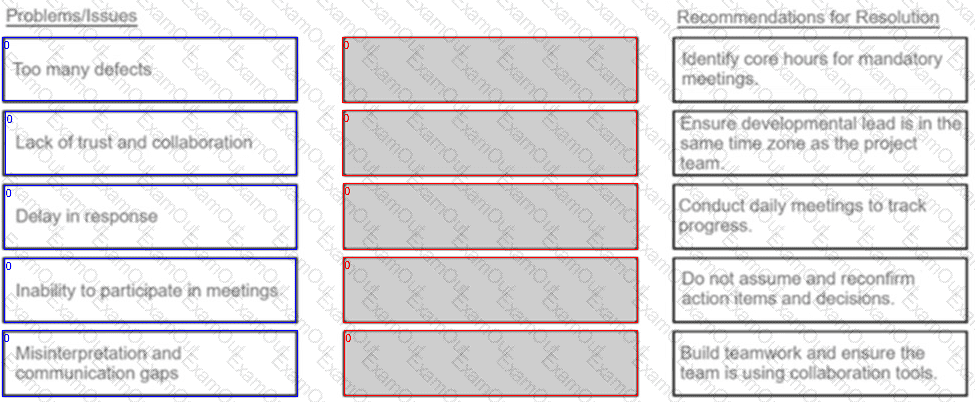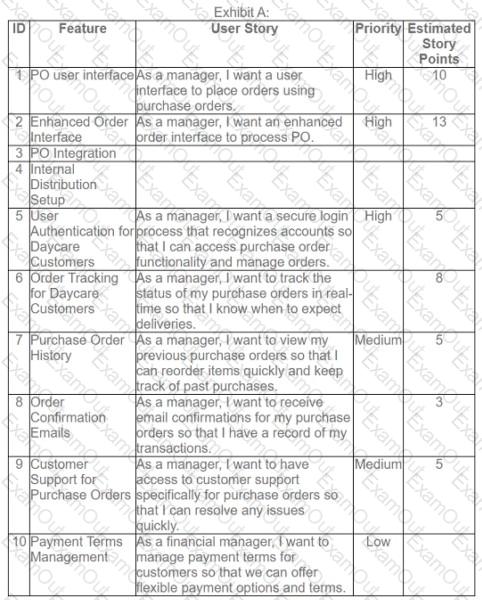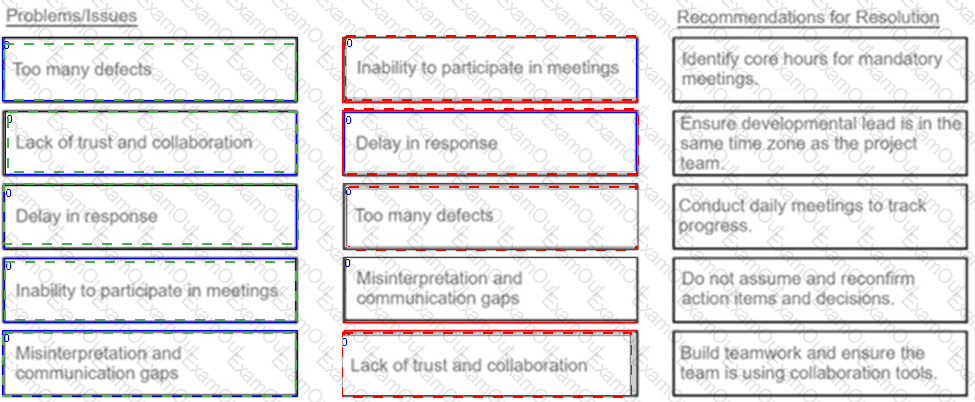An agile coach is facing a dilemma: On one hand, there is a requirement that is vital and will consume all capacity of the team. On the other hand, there are some chore-related tasks that will improve the team's ability to produce results. The team insists on implementing these tasks since they will increase efficiency.
What should the agile coach do?
A product owner wants to create a release plan given the team is working in a chaotic environment. They want to set expectations about what is likely to be developed and in what timeframe for some of the stakeholders.
What should the product owner include in the release plan to achieve this?
A software team is developing a product in an environment with increased uncertainty. Although there is a clear vision of the goals to be achieved, the product owner is not fully certain about how some of the product features should work.
How should the product owner address this situation?
What should the agile practitioner do?
DRAG DROP
All the developers on a project team are working offshore in a different time zone, resulting in many issues. Match the issues to the agile practitioner's recommendations for resolutions below. (Drag the Problems/Issues on the left to the box in the center, corresponding to the correct Recommendations for Resolution on the right)

A company has decided to use an agile delivery method for launching a new product to improve the customer checkout experience. How should the project manager ensure the experienced predictive delivery teams are capable of adopting the agile model?
What should the agile practitioner do next?
An agile coach advised a project manager to continuously improve their ability to support their team and remove any obstacles in the project's way. What role is the agile coach advising to the project manager to take on?

A food company seeks additional business-to-business (B2B) revenues from some customers by
implementing purchase order (PO) functionality. To achieve this, the agile project team is exploring PO integration options (see item #3 in Exhibit A), as the product increment (PI) planning process is underway.
What should the project team do next?
During a project's last few sprints, an agile practitioner notices an increase in defects. A root-cause analysis indicates that a poor understanding of the requirements was caused by the inability of the product owner to communicate clearly.
What should the agile practitioner do?


 Assess dependencies and integration requirements more effectively.
Assess dependencies and integration requirements more effectively. Prioritize and deliver in smaller, testable increments.
Prioritize and deliver in smaller, testable increments. Improve estimation accuracy using techniques like planning poker.
Improve estimation accuracy using techniques like planning poker. Ensure alignment with agile principles of incremental and iterative delivery.
Ensure alignment with agile principles of incremental and iterative delivery.